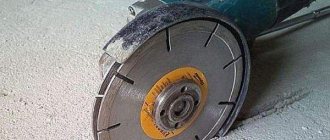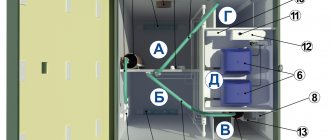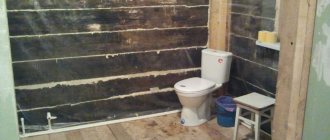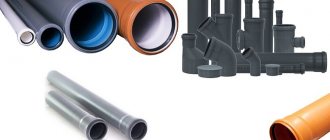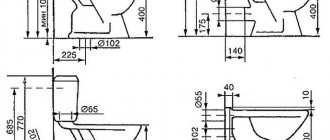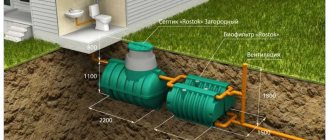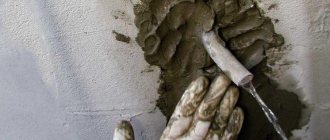Connecting a sink to a sewer in an apartment or private house is a rather labor-intensive and energy-consuming operation, which, however, can be done with your own hands if you strictly follow the recommendations of professionals.
The key element when installing a drainage system in a bathroom or kitchen is a siphon. Its purpose is to create a water seal that allows you to filter sewer “odors.” In addition, an additional obstacle is created to prevent large debris from entering the drain or storm system.
Siphons
These devices come in different shapes. Since the modern plumbing market offers a significant variety of plumbing devices, an important point is the choice of a siphon of the proper design, which will fully comply with the characteristics of the plumbing facility being installed.
Types of siphons
Modern devices in this category are made mainly of metal or plastic. Metal products are more expensive, require more careful maintenance, and are usually preferred in cases where communications are not hidden behind a cabinet or wall, but remain visible.
Metal siphon
Plastic analogues are more practical and therefore have become widespread. This option combines strength and light weight well. Such products are easy to install, and their replacement does not require significant costs. In addition, they are much less demanding to maintain and use than models made of metal.
Siphons made of plastic
Water seal options
The main options for water seals are represented by three main types:
- bottle
- corrugated
- pipe
Bottle type is traditionally in demand due to its simple and effective design. The bottle-shaped part provides a water seal, which reliably prevents the penetration of unpleasant odors from the sewer. Modern models allow you to connect not only a sink, but also a dishwasher and washing machine to the drain.
Bottle water seal
Corrugated - represented by a flexible corrugated tube connecting the drain hole to the entrance to the drain. When using this scheme, it is important to lay the tube in the correct double-bent position, due to which a hydraulic plug will form. The flexible hose takes up very little space and can be used in any limited space, such as a small bathroom. Such models are cheap and easy to install and use, but they cause criticism due to the accumulation of dirt in the folds of the corrugation. If a blockage occurs, this part will require replacement.
Corrugated siphon
Pipe - a current, higher quality, but also more expensive analogue of a corrugated hose - a pipe connection. Instead of corrugating the water seal, it is replaced here with a curved pipe, the material for which is metal or polypropylene. The cost of such models is higher. They are sometimes difficult to install due to the need to accurately align the rigid pipe with the drain socket, so before connecting the kitchen sink to the sewer system or providing drainage for the washbasin, the serious and responsible task of choosing and purchasing suitable equipment is solved. Careful measurements must be taken to ensure that all plumbing parameters match the piping system being purchased.
Pipe water seal
Main types of drain devices
There are several types of drain systems. One of the most common options is a design in which the drain is secured with a large locking nut. This method of fastening can be found even in the bathrooms of houses built more than two decades ago.
Classification by device principle
Drain siphon systems used when connecting sinks come in three types: flask-shaped, elbow and combined.
They differ according to the type of construction:
- Bottle-shaped or flask-shaped . The main structural elements are two cylinders immersed in each other. A tee is installed inside the flask of the device, distributing the liquid and forming a hydraulic barrier.
- Pipe . The main element of the double-turn design is the “S” or “U”-shaped bend of the pipe, which forms a hydraulic barrier.
- Mixed type devices . In addition to the structural elements of the bottle structure, supplemented by two partitions, they are equipped with a corrugated hose.
In bottle-type devices, the waste, entering the siphon, moves down through an internal pipe of smaller diameter. Having reached the bottom, the wastewater rises through the cavity between the inner and outer cylinders and is discharged into the sewer pipe.
Bottle models got their name because of the oblong shape of the tank, which looks very similar to this glass vessel
Bottle siphons are advantageous in that even with rare use of the plumbing fixture, the water seal in the sewer system does not dry out for quite a long time. This effect is achieved due to the fact that the outlet from the siphon is located approximately in the middle of the flask.
Many owners prefer bottle siphons for the reason that, if necessary, they can always connect several drains. To do this, the structure only needs to be equipped with an additional element.
By equipping the bottle siphon with an auxiliary fitting, you can always connect an additional pipe from the washing machine to the drain system
Siphons of mixed type have proven themselves to work well. The corrugated siphon, used when arranging a mixed-type drain structure, is a modified version of a conventional curved tube.
The key difference between the pipe used in arranging a mixed-type drain structure is that it is not a rigid part, but a movable flexible hose
Unlike analogues of bottle and pipe versions, among the combined options there are no models with bells, and therefore they cannot be connected to overflow systems and household appliances.
Division by material of manufacture
There are two types of sink drains available for sale, depending on the material of manufacture: those made of polymers and those made of metal alloys.
Polymer products are famous for their low price and ease of installation. Structures equipped with a corrugated pipe can be conveniently adjusted in length.
But the service life of PVC structures is relatively short. And the sealing properties of the assembled structures leave much to be desired. Therefore, all joining elements must be equipped with rubber gaskets during assembly.
In an effort to reduce the risk of clogging the internal walls of pipes from layers of dirt, leading manufacturers include antibacterial components in their composition when creating polymer products
In terms of reliability and durability, metal elements of drain systems are more beneficial. The models made of non-ferrous metals: brass and bronze are most in demand in everyday use. The harness made from such materials often has a chrome coating, due to which it acquires a rather presentable appearance.
The only drawback of metal pipes is the tendency of the inner walls to retain and accumulate mucus and dirt, which can cause blockages.
To prevent the accumulation of dirt deposits on the inner surface of the walls during the manufacturing process, manufacturers coat metal products with a protective film of chromium.
Installation of metal structures does not present any particular difficulties. A hitch can only arise at the stage if you need to shorten the outlet pipe.
Siphons for non-standard equipment
For non-standard models of double “pair” sinks, siphons equipped with two outlets are used. Such siphon devices are connected to the drains of both sinks, and a little lower along the flow of waste water they are combined into a common flask.
As with single models, the design of siphon devices for drain systems with two outlets can be pipe-type or bottle-type
Do you need to connect a sink located on an open shelf to communications? Then choose a model that offers hidden installation. Yes, the price will be somewhat more expensive than traditional options, but it will allow you to completely hide unesthetic elements of communications.
In addition to corrugated pipes D32/40/50 mm, you can also find universal products on sale, equipped with a stepped spout end, which can be conveniently adjusted to any size
Drain systems of such designs will not be difficult to hide in a niche, covered with a decorative screen. But it is worth remembering that if the bend of the outlet pipe is too short, there is a high risk of an unpleasant sewer “aroma” appearing.
Basic recommendations for purchasing the necessary items
Even if you strictly follow the technology, this does not guarantee a good result; the fact is that the fittings for the kitchen sink must meet a number of requirements, which we will consider:
| Suitable design | All components must correspond to the design of the sink; be sure to make sure that both the type of connection and the size of the fasteners are suitable for your sink. It is best to purchase everything comprehensively, then sellers will independently select the necessary design options in accordance with the characteristics of the sink |
| High quality products | As for the mixer, it is better to choose options made of brass - they are heavier in weight and much more reliable than structures made of powder alloys; there should be no flaws on the surface. As for the selection of a siphon, it is better to choose either an option made of polypropylene (its price is low) or brass - this type of structure is more expensive, but can withstand hot water |
| Availability of sealing materials | To ensure system reliability and functionality, all connections must be secure. To seal threaded connections in flexible hoses, a special Unipak compound is used, and to seal sewer units, silicone sealant with antifungal additives is used. |
| Set of necessary tools | In fact, you only need a few simple tools to carry out all the work at the proper level: a plumber's wrench for clamping connections and two screwdrivers - flat and Phillips |
A special wrench fits any size of plumbing fastener and replaces a whole set of tools
Advice! It is not worth saving on quality, since not only the comfort of use, but also the durability of the assembled system depends on the reliability of the fittings - any malfunctions can lead to leaks and flooding.
Preparing for installation
Determining the height of the sink mounting
An ordinary sink, which is not equipped with additional accessories, is fixed at a height of 850 mm. At this level, a horizontal line is drawn that will correspond to the level of the top surface of the plumbing fixture.
If there is a pedestal (supporting leg) or if the sink is built into a bedside table, the height of the sink does not need to be determined - it will depend on the height of the leg or the height of the bedside table.
Marking mounting points on the wall
The sink connection diagram requires marking before installing the fastening system. The sink bowl has mounting holes at the mounting points. By placing the sink against the wall and aligning its upper edge with the line marked on the wall, mark the position of the places where mounting holes must be made in the wall. It is more convenient to do this work together.
The fastening line is drawn by adjusting the location of the sink by level
In this case, one person holds the sink at the marked line, and the other, at the same time, from below marks the places where the fastening will be carried out. If there is a leg or a supporting cabinet, then the installation is simplified - the plumbing fixture is installed on a support and the mounting points are marked.
Installation of fasteners
Installation of fasteners is carried out as follows:
- According to the markings, holes are drilled in the wall.
- Dowels are hammered into them.
- Screw in the mounting pins.
Mounting pin with plastic dowel
Connecting a sink in the bathroom and kitchen involves the use of dowels, mounting pins, as well as nuts and plastic inserts, which are supplied with the sink.
When screwing in the studs, you need to pay attention to the fact that the depth of their screwing would allow you to hang the sink and tighten the fastening nut, that is, the part of the stud protruding from the wall should have a length slightly greater than the thickness of the sink plus 1.5 cm for tightening the nut.
Screwed-in mounting studs
Stage 1 preparing fastenings for the sink
If a simple model without additional accessories is chosen, and a washing machine or other device is not installed below, then the optimal height of the sink is 850 mm.
The plumbing fixture will be convenient to use, and you can do the installation of the siphon and connect the sink to the sewer yourself, because there will be enough space, and access to all elements of the system will remain free. For a model with a support, the height is determined depending on the height of the leg or furniture in which it will be mounted. When it is decided where the sink will be installed, draw a straight horizontal line on the wall. The device is applied to the line, the attachment points are marked. This is difficult to do alone, so you need an assistant to hold the sink. If the plumbing fixtures are installed on a leg or piece of furniture, the task is simplified.
Using the finished markings, holes are made in the walls, dowels are hammered in and studs are installed for fastening. The depth of screwing in the studs should be such that the device is securely fixed, but at the same time freely placed on the mounts. As a rule, all the necessary parts are included in the sink kit. When installing, you need to use all of them so that there are no unnecessary parts left.
Diagram: installation height of a washbasin in a bathroom
Height of sink above washing machine
If you plan to place a washing machine under the sink, then a “water lily” type model is best suited. Its drain is equipped so that there is enough space under the sink. There are two types of drain: the first is directed backwards, and the second is directed downward.
Designs of the first type leave more space for the machine, however, due to the bends, frequent blockages are possible. The downward drain is designed so that water flows normally through the pipes, but the sink will have to be placed higher above the machine. The height of the plumbing fixture is calculated individually.
To make the sink more convenient to use, it can be moved slightly forward from the wall. Then, when washing, a person will not rest his feet on the machine. This simple technique will allow you to save as much usable space as possible without compromising the comfort of use.
Diagram: installing a washbasin above a washing machine
Connecting the sink to the water supply
Mixer installation
When connecting a sink in the kitchen or bathroom, the installation of the faucet can also be done on a sink already attached to the wall, however, it is recommended to carry out this work first - before fixing the sink, since all connections and fastenings are made from below.
The mixer is installed in the following order:
- A mounting pin or two is screwed into the mixer, depending on its type.
- Install hoses for supplying hot and cold water, tighten them using an open-end wrench; Tightening is carried out carefully with moderate force, taking into account the fact that after installing the mixer on the sink it will not be possible to tighten them any tighter.
- The sink connection diagram includes running hoses through which water will be supplied through holes in the sink.
- A sealing rubber band, a pressure washer and fastening nuts are put on the mounting studs on the reverse side.
- The fastening nuts are tightened using a wrench.
Advice from a professional: Particular attention should be paid to the correct orientation of the faucet spout - the faucet itself is installed at an angle of 90˚ relative to the mounting wall or to the side of the sink adjacent to the wall.
Securing the sink to the wall
Tightening the nuts
After connecting to the water supply, the sink can be secured:
- The sink with reinforced faucet is placed on mounting pins screwed into the wall.
- Plastic inserts are inserted.
- Tighten the nuts.
Connecting a kitchen sink in the presence of a pedestal or supporting cabinet begins with installing it on the supporting elements.
Connecting cold and hot water hoses to the plumbing system
Connecting hoses
A gasket must be installed between the tap and the nut to seal. It is not recommended to tighten the nut too much. The rubber gasket will usually provide a good seal, and the nuts can be tightened after the test has been carried out, that is, after turning on the water. If there is a leak at the connection, the nut will need to be tightened more tightly.
Mounting location installation
After determining the location of the sink, you need to determine the height of its installation. It depends on its type.
The sink located in the bathroom can be installed on a pedestal or without additional parts. If no additional parts are attached to the sink, the average height of its location should be 85–90 cm; if the sink being installed has a support horn or other parts for support, the height of its installation should correspond to the height of the supporting parts.
The height of the sink installed in the kitchen must be the same as the height of the kitchen cabinet into which it will be installed. To fix the selected height level on the wall surface, you must draw a horizontal line.
Connecting the sink to the sewer
Bottle and S-type siphons
After the water supply is connected, you need to connect the sink to the sewer. This work begins by installing a siphon.
At the same time, it is taken into account that the presence of a special hole for overflow protection indicates the need for the siphon to have an additional pipe for water overflow. Siphons are made in both S-shaped and bottle-shaped shapes.
Pro Tip: For kitchen sinks, it is recommended to use an S-shaped siphon, as the bottle siphon is prone to clogging quickly (this type of siphon will have to be cleaned frequently).
Connecting the sink to the sewer is carried out as follows:
- The siphon outlet is inserted into the sink and secured.
- A pipe (either rigid with an angle or corrugated) is screwed to the siphon.
Connecting a siphon to a corrugated pipe in the kitchen and to a rigid pipe in the bathroom
- The screwed pipe is inserted into the sewer outlet. If the diameter of the outlet significantly exceeds the diameter of the pipe coming from the siphon, then it is necessary to use a special adapter, which is called a sealing collar (made of rubber), and fasten the pipes well.
- Next, you need to check all connections for leaks.
Important Notes
Notes to consider before starting work:
- To connect the kitchen sink to the sewer system, it is not recommended to tightly tighten all connections using a wrench, as this can damage the rubber sealing gaskets and waste time and effort.
- If, when checking the tightness of the connections between the cuff and the sewer pipe, a stream of water oozes out, then you need to remove the cuff, dry the surfaces that are to be connected, and then lubricate the dry cuff with sealant and make the connection again.
- When connecting a double sink, you must use a special siphon with an outlet to two pipes.
Double sink connection diagram
Following simple rules will undoubtedly help every interested owner install a kitchen sink or bathroom sink in their home without calling a plumber. You can either connect the sink to the sewer system or connect the water supply to it with the installation of the mixer absolutely independently.
Connecting plumbing in the bathroom
Today, when deciding how to connect a sink to a sewer in a toilet, it should be taken into account that washbasins are now, as a rule, equipped not with a single outlet pipe, but with a full-fledged drain and overflow system. In this configuration, the drain pipe is supplemented with a tube leading from a hole located high in the side wall of the plumbing, above the mixer, with a drain channel.
Thus, when filling the bowl, water will not overflow, falling through the drainage tube directly into the siphon.
Dismantling
The first step in installing a drain when replacing a washbasin or bathtub is to dismantle the old device. To do this, remove the holding screw located in the center of the drain grid installed in the washbasin. Due to long-term use, parts of this structural element sometimes become stuck to each other.
In such a situation, the solution is to dismantle the lower flask of the siphon apparatus: then, in the process of turning the upper part, the coupling of the screw and the grille will most likely be loosened. There is also the option of using a special product - a solution, which will help remove old contaminants that adhere to parts.
After the siphon flask or pipe is dismantled, it is necessary to clean the drain pipe and then plug it while installing new equipment, for example, with a rag - if you do not want the open riser to stink and poison your existence throughout the entire repair process.
Installation of kitchen equipment
Connecting a mortise or counter-mounted sink to a sewer system in the kitchen differs from similar work in the bathroom in some features related both to the nuances of installing the equipment and to its design characteristics.
Water sealing devices
Water seal devices installed in the kitchen area, in many cases, have a standard appearance, but varieties are often installed that have:
- two sockets for double sinks;
- several outlets for connecting household appliances;
- garbage shredder;
- flattened wiring;
- other new models.
Accordingly, the methods for arranging a kitchen drain will also not be the same. The necessary operations here include pre-assembly or direct construction of the pipeline during installation work. In any case, this stage is usually started last.
If the structure is complex and its parts are made of plastic, before connecting them you should make sure that all components are of high quality, free from flaws and will ensure the tightness of the drainage structure.
Flask
The standard algorithm of actions at this stage includes supplying the water seal flask with a gasket, attaching the lid, combining the “glass” and drainage tube using a union nut and sealing gaskets, and, finally, connecting the siphon to the kitchen drain and fixing it.
Outlet corrugation
Then the outlet corrugation is placed in the drain and the assembly is sealed. If there is an overflow, its fixation is carried out in a manner similar to the method described above for arranging a drain pipeline in the bathroom.
Siphon with two bells
To properly connect a kitchen sink to the sewer system if there are two compartments and install a faucet, a special siphon apparatus with two sockets is used. Its connection, in essence, differs from that described above in the need for more precise fitting and standard joining and sealing operations with both connecting funnels.
In cases where it is necessary to ensure the drainage functions of a dishwasher or washing machine, two drain fittings are usually used. Dishwasher hoses are arranged in one pattern or another depending on whether the fitting is mounted straight or at an angle.
Connecting the sink
Assembling the water seal
How to connect a sink to a sewer with your own hands? The next step is to assemble the water seal - most often, manufacturers provide this device with instructions in the form of a picture. If it has a flask-shaped structure, the sequence will be as follows. First, it is tried on at the installation site in order to establish compliance with the parameters and the necessary marks are made.
Then they check how reliable the fastening of the bottom plug is. It must be unscrewed and determined whether the integrity of the seal underneath is maintained. This control operation is very important, since it is this part that is subject to constant pressure when using the pipeline.
Poor quality connections often contain defects such as burrs. They must be disposed of, otherwise there is a risk of damage to the sealing gasket.
Water seal glass
After making sure that all parts are in good condition, assemble the water seal cup. To do this, first of all, the lower part is screwed on. The spout is equipped with O-rings and tightening nuts, then it is placed in the hole intended for it in the upper “floor” of the body and secured here with a nut. Care must be taken to ensure that the fasteners are not over-tightened; otherwise there is a risk of damage to the fastening.
Overflow assembly
The nuances of assembling the overflow depend on its design features. Today, manufacturers usually provide a telescopic overflow tube: its size can be easily adjusted to accurately match the drainage height to the specified installation parameters of the washbasin.
Corrugated hose
Another option is a corrugated hose: it is stretched to the required length and mounted to the connecting points. Connecting joints are sealed with the included or additionally purchased gaskets. Tightening of threaded parts must be carried out without overtightening.
Installation of drainage equipment
Next, the installation of drainage equipment is carried out. Before connecting the siphon to the water supply and sewerage pipelines, a grate is first installed in the pre-cleaned and grease-free drain hole of the bowl of the plumbing fixture, which serves as a filter during operation.
How to assemble a siphon
The upper socket of the outlet tube is equipped with an O-ring and is connected to the hole in the lower part of the washbasin. The socket mount is fixed to the grille using a long screw. After this, the other end of the pipe is inserted into the water seal flask.
Connecting a drainage system to a drain of a larger diameter is usually done using a special cuff: this method guarantees a tight fit of all parts, the absence of even a minimal gap and prevents the penetration of fetid gases into the room.
Connecting a siphon to the sewer
Installing a sink on brackets
This is the simplest and most common installation technology. It includes 5 stages:
- On the installation wall, draw a straight line parallel to the floor with a pencil. The height is determined individually.
- We measure the thickness of the wall of the device, the one that will be adjacent to the wall. The resulting parameter is the distance that is measured down from the drawn baseline; we draw another line at the measured mark. This is where the brackets will be attached.
- Measure the exact distance between the brackets. We attach them to the base line and mark the attachment points. We drill holes at the marks, insert dowels into them and attach the brackets to the wall.
- According to the manufacturer's instructions, we attach the bowl to the brackets.
- We connect the mixer and siphon.
Mounting a pedestal sink
The advantages of this type are that the pedestal takes on the main load, reliably supports the bowl, and hides the plumbing and siphon. But such devices have a fixed installation height. All necessary elements are included in the package. If the flexible hoses are not long enough to connect to the water supply system, you will need to purchase hoses of the required length.
Installation technology
- Marking. We place a pedestal against the wall and carefully place the bowl on it. We set it exactly level and mark the mounting points through the mounting holes. We drill holes in the marks, drive dowels into them and screw in self-tapping screws with a screw thread for the nut.
- Installation of mixer and siphon. We connect flexible hoses to the mixer. On the back of the mixer there is a special groove in which you need to install a rubber gasket-ring. Install the faucet tightly into the hole in the sink. On the reverse side you need to install a rubber seal and a washer. Then we fix the tap with a nut and a pin. Then we strip and install the siphon. The siphon is connected to the sewer outlet using a corrugated pipe, but only after installing the washbasin.
- Using the mounting holes, we put the bowl on the self-tapping screws and secure it with nuts and plastic washers (this prevents damage to the earthenware).
- We connect flexible hoses to the water supply and the siphon to the sewer outlet. Then we place a pedestal under the bowl. As a rule, installation of the pedestal does not require additional fastening to the floor; it stands stable.
Important point
When installing the bowl, do not tighten the nuts as much as possible so as not to damage the product.
Installing a sink on a semi-pedestal
Such models look elegant and save space. The semi-pedestal is a decorative element and does not perform load-bearing functions. It only hides communications. The height here is not fixed, but is determined independently.
- The package includes powerful brackets that are attached at a measured height to the wall using dowels and self-tapping screws. When attaching them, be sure to use a building level to ensure the bowl is level.
- The bowl is hung on the installed brackets and connected to the water supply and sewerage systems (we assemble and install the mixer and siphon group).
- Depending on the model, the semi-pedestal is mounted using a spring suspension or studs. Both options provide reliable fastening of the decorative leg.
The nuances of installing wall-mounted and console sinks
Mounted models are equipped with a special installation system, through which their installation is carried out. Console ones can be super compact, designed with a cabinet or cabinet. A separate type of them are “water lily” washbasins, designed for installation above a washing machine. Hanging models are versatile and can be matched to any interior. In terms of installation, they are more complex and are attached exclusively to the main wall.
Installation technology
- Powerful brackets or a frame structure (depending on the model) are attached to the wall.
- The siphon is assembled. Wall-mounted/console models are equipped with a bottle siphon made of polished stainless steel, which has a direct outlet to the sewer. Its assembly must be carried out exactly according to the manufacturer's instructions.
- Installing the bowl on the brackets and fixing it with nuts.
- Installation of mixer and bottle siphon.
You can also install the washbasin on a hanging shelf, which will serve as brackets, distribute the load from the equipment, hide communication elements, and at the same time serve as a functional place for storing cosmetics.
The technology for installing a sink on a hanging shelf is not particularly complicated:
- Note the height of the device.
- Place the cup on the mark and mark the attachment points.
- We drill holes and insert plugs for dowels into them.
- We attach the sink and secure it.
- Mark the fastenings for the hanging shelf.
- We immediately mark the location of the drain hole and water pipes.
- We install the mixer before installing the shelf.
- Drill holes in the wall and install the shelf using dowels. It is important to ensure that the drain hole is aligned with the corresponding one in the shelf.
How to connect a sink yourself
It is impossible to imagine the interior of a bathroom or kitchen without a sink. Installation of this product is quite simple and can be done independently, without the involvement of professionals. However, there are several nuances that must be taken into account when installing this type of plumbing yourself. In this article we will talk in detail about the features of installing sinks of different types.
Installation of corner structure
These models are ideal for small bathrooms. Their installation is not difficult. If the washbasin is installed on a corner cabinet, then first install the cabinet, then install the sink on it.
With the standard hanging version (without stand), the height is initially determined and marked. Then we lean the device and mark the mounting points with a pencil. We double-check the marked dimensions with a tape measure. Drill holes according to the markings and insert plastic plugs. We lean the bowl and tighten the dowels. We assemble and connect the mixer and siphon.
Recessed and surface mounting
Such sinks are a priority choice for spacious rooms. They are often installed in pairs on one flat base - tabletop, cabinet. The shape of the bowl can be any, even the most non-standard. Overhead ones are installed on the surface, and built-in ones are cut into the surface. This is the most ergonomic option.
The bowl of a built-in washbasin can be installed in several ways: hidden and mounted under the countertop (important for countertops made of natural stone), the sides of the bowl protrude and are located above the countertop (ideal for rectangular bowls), semi-built-in - the bowl is embedded in the countertop, but its front part protrudes beyond its limits.
Installation technology
- The tabletop is marked for cutting a hole. As a rule, for mortise models, manufacturers include a special template for carrying precise markings.
- Using a jigsaw, a hole is cut according to the markings.
- The end of the hole must be cleaned with sandpaper and sealant applied in 2-3 layers.
- The mixer and siphon are assembled and installed on the washbasin.
- The side is covered with a special waterproof tape, which acts as a seal.
- The fastening elements included in the kit are installed on the side.
- The bowl must be carefully turned over and sealant applied to the edge.
- Next, the washbasin is installed in the hole, and the fasteners are tightened tightly.
- The siphon is connected to the sewer outlet, the mixer hoses are connected to the water intake.
How to determine a poor siphon connection?
If the siphon connection is poor, you may experience an unpleasant odor from the sink. There may also be increased humidity in the pipe leading to the siphon and the appearance of puddles under the sink.
When connecting the sink to the sewer system, experts do not recommend over-tightening the connections with a wrench, as this may damage the rubber sealing gasket.
connecting the overflow and drain from the sink
If during the process of checking the tightness a stream of water flows between the pipe and the rubber cuff, then the second element must be removed and the connection area dried. Next, the dried cuff needs to be treated with sealant and put in place.
Special Notes
Before connecting the sink to the sewer, you need to take into account some notes, namely:
- When connecting the kitchen sink to the sewer, there is no need to over-tighten the connecting elements with a wrench. If you do not take this feature into account, the rubber sealing gasket may be damaged, then it will need to be changed and tightened again;
- When checking the tightness of the connection in the area between the pipe and the cuff, a trickle of water may leak out. If this happens, then you need to remove the cuff and dry the surface of the connection area. Next, the dry cuff is lubricated with sealant and the elements are reconnected;
- if you plan to connect two sinks to the sewer system at once, it is recommended to buy a special siphon equipped with two outlets for sewer pipes.
By following simple rules during the installation process, you can quickly and easily connect the sink to the sewer with your own hands without the help of a plumber. It is also easy to connect the water supply to the plumbing fixture.
Errors made during the installation process that can cause pipes to become clogged
Pipes from sinks, sinks and other plumbing fixtures must be mounted on a connection at a right angle of 90 degrees. If two devices are installed and the drains are drained towards each other, a blockage may occur in the tee of the pipe, which goes directly into the drain pipe. In this case, it makes no sense to clean the pipes from the side of the sink or washbasin using a spiral or hydrodynamically using a hose. If it comes to two sinks connected next to each other, then it is clear that from one sink the hose will pass to the second sink, but it will not be able to turn in the direction of the main drain pipe
One way or another, it will be quite difficult to clean the sewer. Another important mistake is that the drain pipe coming from the washbasin or sink is too high in the bathroom. As a result, the process of draining wastewater into the sewer pipe becomes difficult.
Many people decide to move pipes and plumbing fixtures, which include bathtubs, sinks and sinks, to another location that is not provided for in the project. If pipes are changed, the main problem may be that the outlet to the device will be rigidly tied to the outlet of the pipe in the riser, and the situation is very difficult to change. When connecting sinks and sinks, everything should be fine, since there is a certain height reserve, taking into account the fact that plumbing fixtures are suspended at a height of approximately 90 cm. But despite this, many inexperienced installers may not take into account or think through such a detail. It is easier to make a mistake with the height when connecting a bathtub and shower. Often the drain is located above the floor surface. It is quite difficult to lift a heavy bathtub yourself, so a simple solution is to install the drain pipe above the siphon outlet. Thus, the pipe is often laid without the required slope, which can also cause clogging of the sewer. You can often encounter a problem in which pipes that are supposed to be attached to the wall from the outside are not fixed correctly. Products may sag, and counterslopes and other practically irreparable cases often form. Of course, this does not in any way affect the proper functioning of the sewer system, but this feature can cause blockages, which will require frequent cleaning of the pipes.
Installation of a sink in the kitchen and a washbasin in the bathroom is carried out approximately the same way, because the purpose of the devices is similar. Most often, the home owner can do all the work himself. There are general rules that must be followed when installing plumbing; you should definitely know them. However, if you do not have the skills to handle tools or are planning a complex plumbing installation, it is better to call a specialist.
Installing a sink in the bathroom
